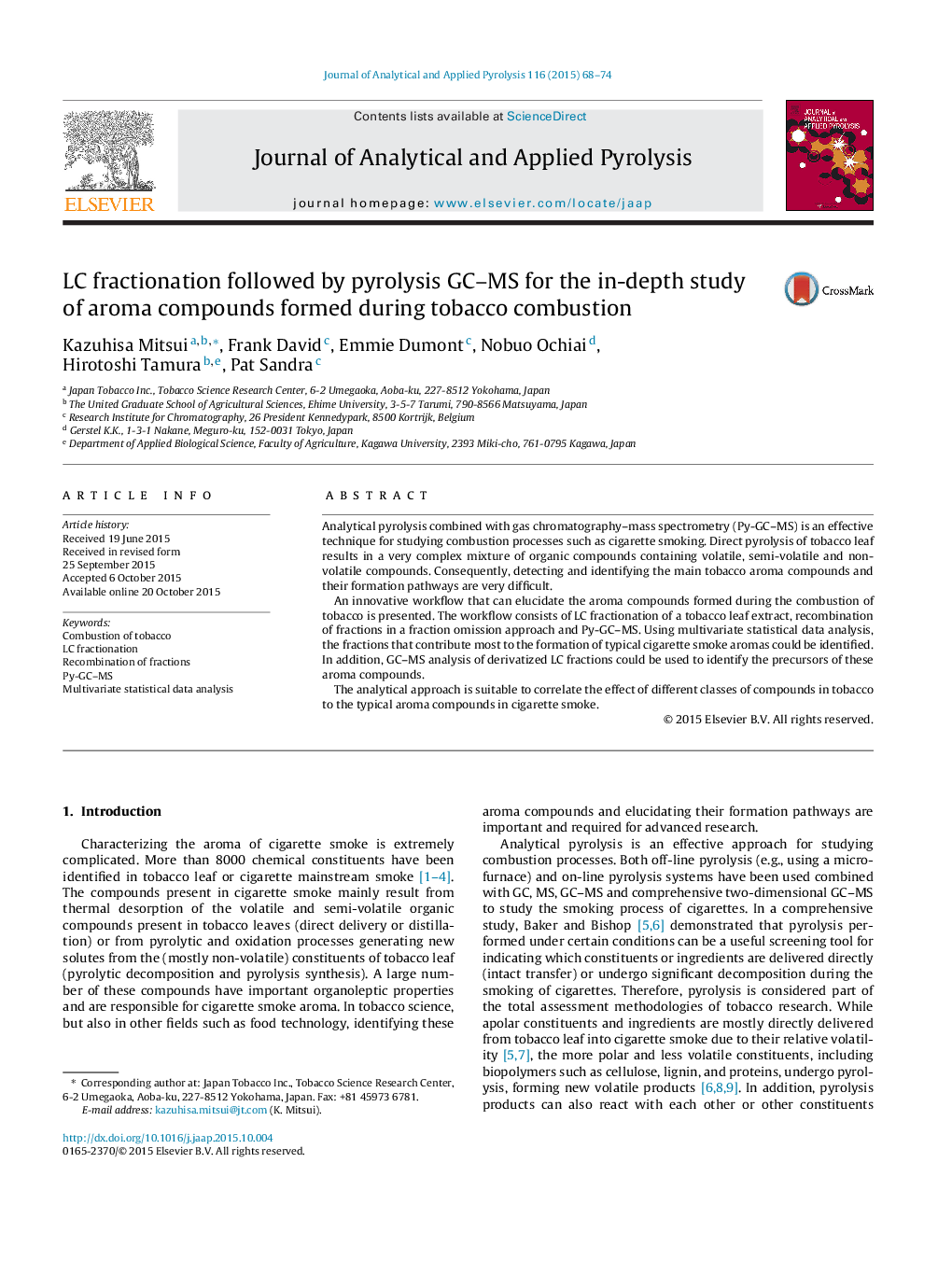| Article ID | Journal | Published Year | Pages | File Type |
|---|---|---|---|---|
| 1197003 | Journal of Analytical and Applied Pyrolysis | 2015 | 7 Pages |
•Tobacco leaf pyrolysate was compared with cigarette smoke condensate.•Pyrolysis of LC fraction was performed using omitted samples.•Multivariate statistics was done to find out the differentiation.•Aroma precursors were identified in the fraction.
Analytical pyrolysis combined with gas chromatography–mass spectrometry (Py-GC–MS) is an effective technique for studying combustion processes such as cigarette smoking. Direct pyrolysis of tobacco leaf results in a very complex mixture of organic compounds containing volatile, semi-volatile and non-volatile compounds. Consequently, detecting and identifying the main tobacco aroma compounds and their formation pathways are very difficult.An innovative workflow that can elucidate the aroma compounds formed during the combustion of tobacco is presented. The workflow consists of LC fractionation of a tobacco leaf extract, recombination of fractions in a fraction omission approach and Py-GC–MS. Using multivariate statistical data analysis, the fractions that contribute most to the formation of typical cigarette smoke aromas could be identified. In addition, GC–MS analysis of derivatized LC fractions could be used to identify the precursors of these aroma compounds.The analytical approach is suitable to correlate the effect of different classes of compounds in tobacco to the typical aroma compounds in cigarette smoke.
